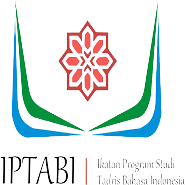Author Guidelines
Submission Preparation Checklist
As part of the submission process, authors must check that their submissions comply with the following items. Submissions that do not adhere to these guidelines may be returned to authors.
- The submission has not been previously published, nor has it been before another journal for consideration (or an explanation has been provided in Comments to the Editor).
- The submission file is in OpenOffice, Microsoft Word, or RTF document file format.
- Where available, URLs for the references have been provided.
- The text is single-spaced, uses a 12-point font, employs italics rather than underlining (except with URL addresses), and all illustrations, figures, and tables are placed within the text at the appropriate points rather than at the end.
- The text adheres to the stylistic and bibliographic requirements outlined in the Author's Guidelines.
Author Guidelines
- Articles submitted to the Journal should generally be between 3,000 and 6,000 words or 7 and 15 pages with single spacing. They should be accompanied by an abstract of not more than 300 words containing the importance of the topic, the gap between theory and practice or between reality and expectation, the lack of studies, the objectives of the present study, the method, the findings, and the conclusion.
- In the abstract, explicitly write in bold the introduction, the objective of the papers, the method, the findings, and the conclusion.
- Below the abstract, about three to five keywords should appear together with the article's main body with a font size of 11.
- The Journal operates a peer review process and promotes blind reviewing. The author's name (without academic titles), institutional affiliations, and the corresponding author's email address should appear only on a detachable cover sheet to facilitate this process.
- Articles should be written in indonesia or English in single space, using Microsoft Word, font size 12, Times New Roman, top and left margin 3 cm, bottom and right margin 2.54 cm, printed in Letters.
- Insert a header on an even page indicating the Journal's name, volume, number, month, year, and publication page number. On the odd page, insert the author(s) and a few words of the title of the articles.
- Write the article's main body in one column, except for tables and figures. Use the first line indent of 1 cm, but no indent for the first paragraph right after the main title and the first paragraph after the subheadings.
- For research-based articles, the outline used is the following: introduction (without heading or subheading), method, findings and discussion, conclusion, and references.
- The title should be less than 15 words, capitalized and centered, with a font size 14.
- The introduction should include the background of the study, research contexts, literary review, and research objective. It should comprise 15-20% of the whole article and be presented as paragraphs, not pointers.
- The method section consists of a description of the research design, data sources, data collection, and data analysis, which accounts for 10-15% of the total article length, all presented in paragraph form.
- The findings and discussion section describes the results of the data analysis to answer the research question(s) and their meanings as seen from current theories and references in the area addressed. This section accounts for 40-60% of the total article length.
- The conclusion section consists of the summary and restatement of the main findings.
- Use only horizontal lines when using tables. On top of each table, put the table number and the title.
- Every source cited in the body of the article should appear in the reference, and all sources appearing in the reference should be mentioned in the body of the article.
- The sources cited should at least 80% come from those published in the last 10 years. These sources are primary sources in the form of journal articles, books, and research reports, including theses and dissertations. Citations from Journals should be at least 80% of the total references cited.
- Citation is done using brackets (last name and year of publication). When the sources are cited verbatim, the page number is included (e.g., p. 78 or pp. 78-89).
- Quotation and references follow APA style.









